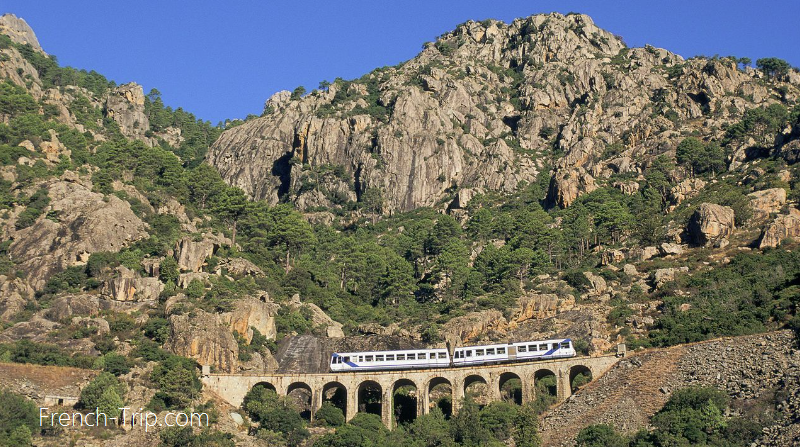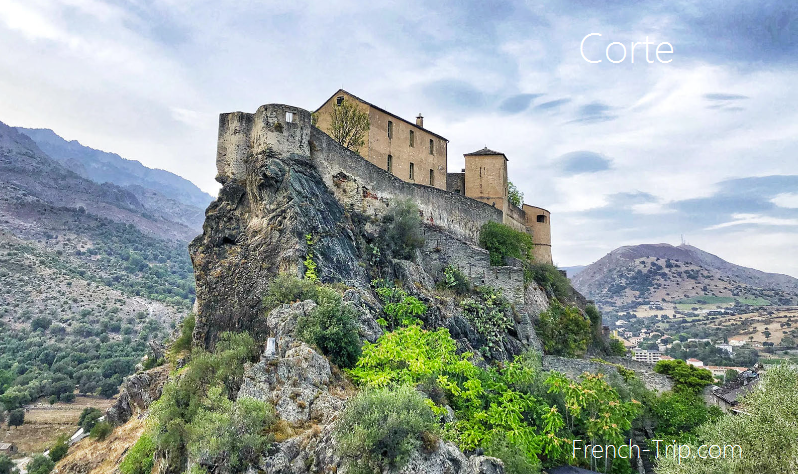Bastia
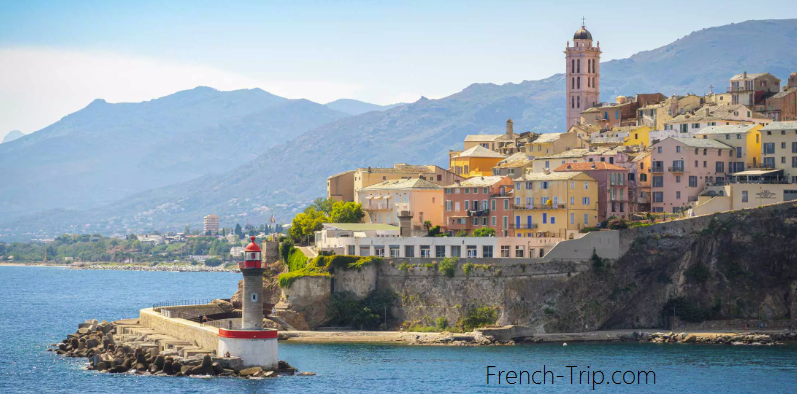
Bastia is essentially the gateway to Corsica for all those who come from Italy: this is where ferries from Livorno and Genoa arrive. But even the less picturesque nature around and the large port cannot take away from Bastia all its charm of an authentic old town, with shabby walls of houses, picturesque French balconies with geraniums and the delicate aroma of fresh croissants from bakeries. Enjoy at least a whole day in Bastia! And its severe beauty, so typical of Corsica, will certainly remain in your heart.
Among the sights of Bastia, it is worth noting the powerful citadel, which offers a panoramic view of the port and the city center, as well as several old churches.
Weather in Bastia:
Bastia Travel Guide:
Bastia is the second largest city in Corsica after Ajaccio, but is often ignored by tourists once they arrive at the port or airport. This is a pity, because behind the unremarkable facade of Corsica’s economic center lie two ancient cities and numerous churches with Baroque treasures.
Narrow streets, steep staircases, tall houses and squares planted with plane trees and palm trees… Today’s Bastia arose from a former fishing village around the harbour, Terra Vecchia. Particularly impressive are the two bell towers of the Baroque church of St. John the Baptist. It is the largest church on the island, built between 1636 and 1666. Inside the gloomy interior are numerous art treasures and an impressive organ tribune with three paintings.
The construction of the citadel, which gave the city its name (from the Italian word bastiglia, meaning bastille), also gave rise to the walled quarter of Terra Nova. One of the most beautiful walks runs along the southern bank of the Old Port, where a wide staircase leads past the beautiful Jardin Romieu. Next to the Bastia Citadel, completed in 1480, the fortified quarter is home to the Governor’s Palace, built in 1520, which has housed the Bastia Museum, dedicated to Corsican folklore, since 2010.
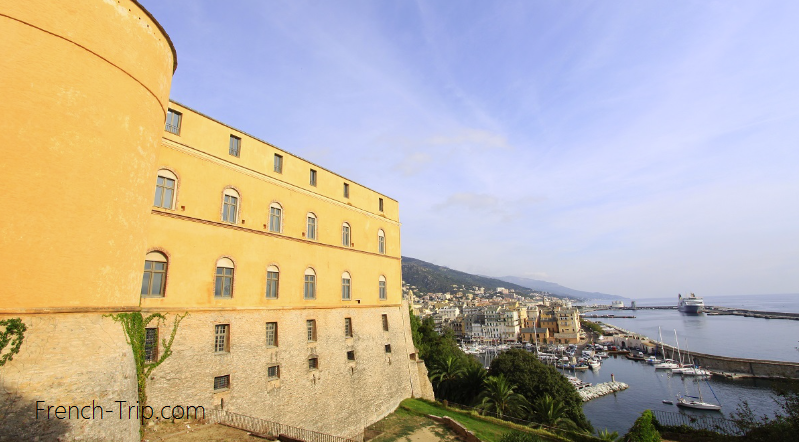
How to get to Bastia:
Most people come to Bastia by ferry from France (Marseille, Toulon, Nice) or Italy (Genoa, Savona, Livorno). Ferries vary greatly in quality, even within the same company. They are very crowded in summer, so book your tickets in advance, even if you are just a pedestrian without a car or a cabin (tickets are typically in range 65 – 85 € per person one direction). There are many car rental offices on the streets facing the turnstile exit. They are open from Monday to Saturday from 08:00 to 20:00, on Sundays no one works.
If you arrive on the island by plane, it is worth renting a car, since public transport in Corsica is frankly not very good. You can use train or bus from Bastia to some other cities in the north part of Corsica (Ajaccio, Corte, Calvi, Ille-Rousse), but small villages and towns in South Corsica will be practically not reachable.
The city itself is quite convenient to get around on foot.
What to see in Bastia:
Bastia is a charming town with its main highlight being the Citadel. The old town, with its quaint and slightly worn appearance, gives off a charming vibe and is worth exploring at a leisurely pace. It’s a good idea to dedicate a full day to Bastia, as the city is quite spread out.
While you can explore most of Bastia on foot, the city also has a bus network run by the Société des Autobus Bastiais.
Wander through the narrow lanes from the Old Port to the Citadel and uncover the wonders of Bastia. Mysterious and captivating, this is a city of contrasts, enchanting visitors with its striking duality.
From Terra Nova to Terra Vecchia, the historic heart of Bastia is filled with cultural gems that showcase its Genoese heritage, standing proudly alongside bold, modern architectural innovations.
Bastia tourist office
- PLACE SAINT – NICOLAS , 20200 BASTIA
- + 33 (0) 4 95 54 20 40
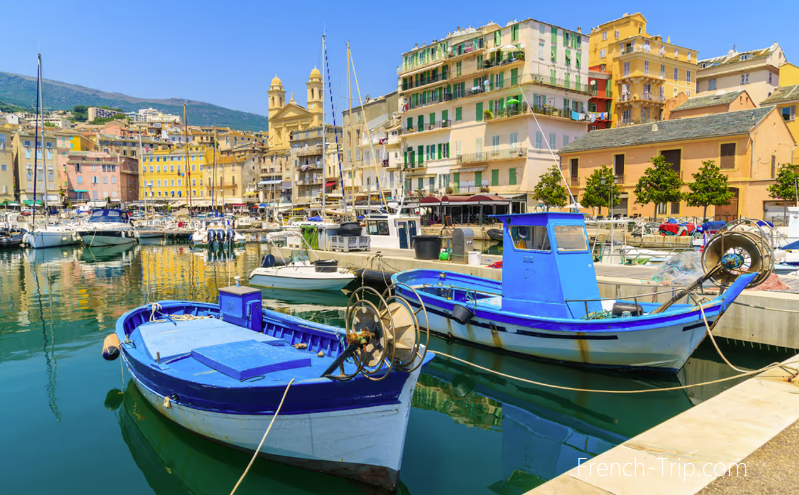
Bastia Main Attractions
Bastia’s key attractions are concentrated around the Old Port. The city is divided into an old port area at the center, with a citadel and old town on the hill above it, and to the north of the port, broad boulevards and squares from the 19th century. The waterfront, with its tall, slightly weathered buildings and an array of restaurants, creates a beautiful scene around the marina filled with luxurious yachts – ideal for a relaxing lunch.
The port is especially stunning at dusk or early evening. The skyline is dominated by the twin towers of St. Jean Baptiste Cathedral. To the north lies the historic Terra Vecchia district, home to notable churches like the Oratoire de l’Immaculée Conception and the Confrerie St-Roch.
South of the harbor is the imposing citadel, built by the Genoese between the 15th and 17th centuries. You can reach it by walking through the Jardins de Romieu or via the street leading up to it, entering through the grand Porte Louis XVI. Once inside, you’ll find the Place du Donjon and the entrance to the Palais des Gouverneurs, now housing the city’s museum. Further in the narrow alleyways, you can visit the former Cathédrale Santa-Marie de l’Assomption (constructed in 1619) and the Baroque Oratoire Ste-Croix, a small chapel dating back to around 1600.
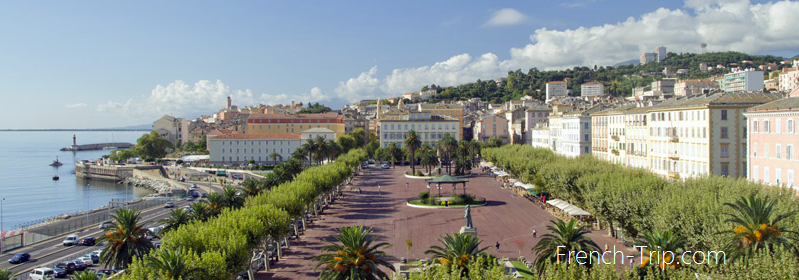
Bastia Museums
Bastia is home to several significant museums that highlight its rich history, culture, and art. The most prominent is the Palace of the Genoese Governors, now the Bastia Museum, located in the citadel of Terra Nova. This museum offers a journey through seven centuries of the city’s history, combining collections of paintings, sculptures, and historical artifacts. It also features works from the collection of Cardinal Fesch, showcasing Italian art from the 17th and 18th centuries, and regularly hosts temporary exhibitions and cultural events.
Another notable museum is Fortin Ecomuseum (outside of Bastia) dedicated to showcasing the island’s traditional way of life, especially its rural and agricultural heritage. Located in a restored fort or traditional building, the museum offers visitors an immersive experience into Corsica’s past, displaying tools, artifacts, and exhibits related to farming, craftsmanship, and local customs.
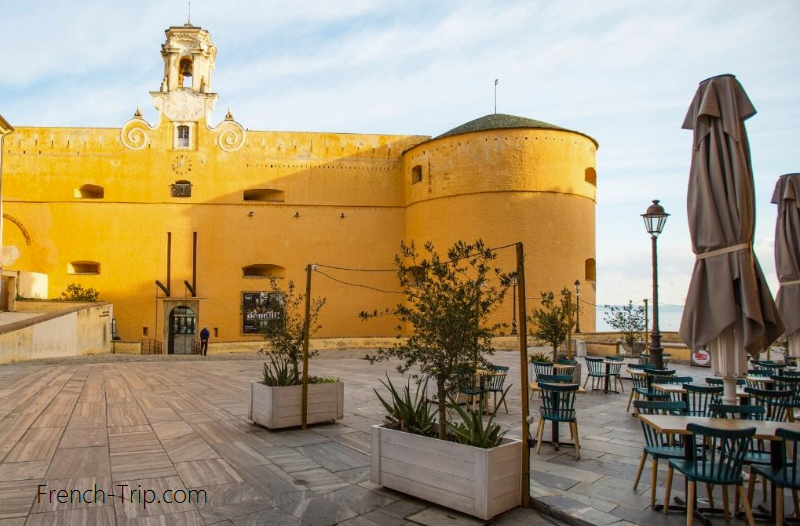
Excursions in Bastia
The Petit Train de Bastia offers an engaging tour of the city. It takes visitors on a historical journey to the Genoese citadel, followed by a walking tour of the old town’s vibrant streets. Depending on the day, the guides are fluent in several languages including Italian, English, German, and often Spanish. The excursion ends with a return to Terra Nova through the Old Port, providing a delightful overview of Bastia’s key landmarks.
- Frequency: from April 1 to October 15.
- Departure: Place Saint Nicolas (opposite the tourist office).
- Duration of the excursion: approximately 45-50 minutes.
- Departure times: 09:00 – 12:00/14:00 – 17:00 (dep. every hour).
- Price: adults: 8 €, children 3 – 12 y: 3.5€
Bastia with Kids
For a fun family outing during your trip to Bastia, just 25 minutes away and 15 minutes from Saint-Florent, you’ll find a beautiful, green park where kids can get up close with animals living in semi-freedom.
Corsica Zoo
The park is home to over 450 animals from Corsica and beyond, spread across 8 hectares of natural landscape. Corsica Zoo is a 100% private company that does not receive any subsidies. For every adult visitor, 1 euro is donated to animal protection associations. The rest is used to pay ongoing costs and food for animals.
Children will love the dedicated play area and mini-farm, while parents can relax at the on-site snack bar or browse the gift shop. It’s a perfect day trip for families looking to connect with nature and wildlife.
- Opening hours: Zoo is open every day from February 10th to early November, including Sundays and public holidays.
- Tickets (as of 2024): 14.50 €, children 3 – 11 y – 9.80 €
- Address: 5810, Strada di l’alivetiLocu Troscia,20232 Olmeta-di-Tuda
- www.corsicazoo.com
What to eat in Bastia:
There are a number of specialties “Bastiane“ which include seafood, of course. It is worth trying wild boar sausages, local doughnuts and Corsican liqueurs and wines, which are rarely found outside the island.
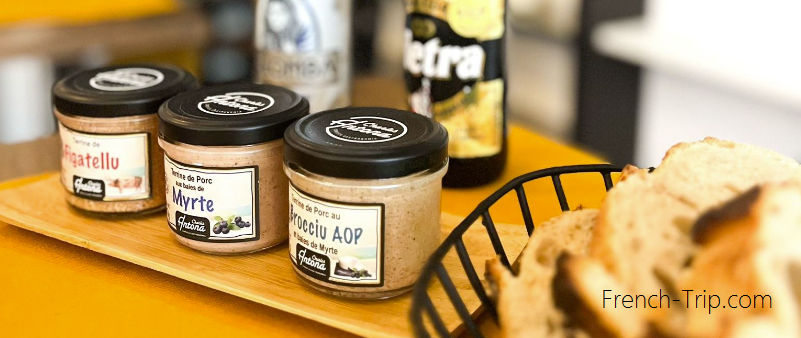
Corsican wines
With less than 1% of national production, Corsican vineyards are the smallest wine region in France. They say it is “the oldest of the new worlds”! It has managed to extract the best from its roots and become one of the world’s outstanding wine regions… The mere mention of its grape varieties already promises something extraordinary: Nieluccia, Sciaccarella, Pagadebiti…
Situated on a vertiginous plateau, spread out on a long narrow peninsula, very close to the sea and not far from villages – this is the backdrop for the PDO Corse Coteaux du Cap Corse. Most of the vineyards are made up of slate soils. The typical Mediterranean climate, mild winters and hot summers give the wines finesse and elegance. As for the wines, the structure of the red wines is enhanced by the terraced cultivation and the constant exposure of the vines to the sun during aging. As for the white wines, which are also highly valued, they combine finesse of aromas and floral notes, complemented by excellent minerality.

Now head to Patrimonio, which was the first Corsican protected designation to receive national recognition. It is also part of two “Cru de Corse” designations. Situated at the foot of a cape near the sea, this vineyard has a special microclimate. The geological quality of the soil allows for the creation of remarkable wines. The red wines are luxurious, powerful and persistent in taste. The dry whites are graceful and elegant. Finally, the rosé wines are fresh, although a little more intense, with crisp fruit. The winemakers of PDO Patrimonio practice organic farming for the most part (i.e. without chemical fertilizers and according to strict bio-production standards).

Shopping in Bastia:
As Bastia is a fairly large city and the gateway to Corsica, you can find many shops here, including French chain brands. For local specialities go to one of traditional markets of Bastia. Do not forget to visit the Mattei Concept Store, located in the heart of Bastia on Place Saint Nicolas since the end of the 19th century. It is the only store in Corsica listed as a historical monument.
- Read more: Shopping in Bastia
- Souvenirs from Corsica
- Sales in France
- Tax-Free Refund
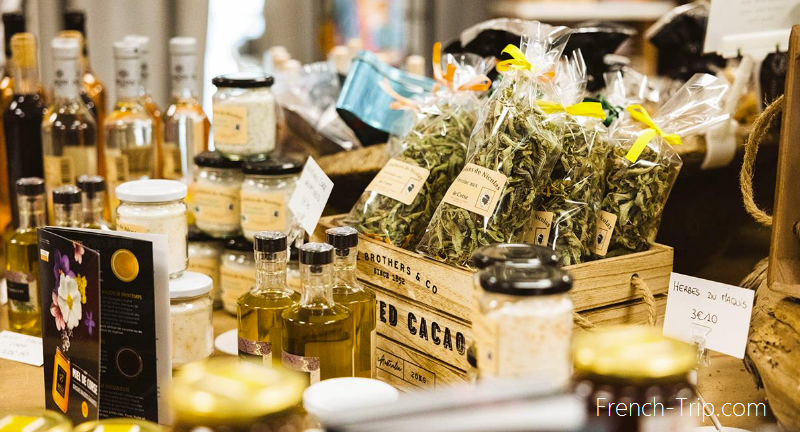
Around Bastia:
By public transport:
- Cap Corse: Take a bus to explore picturesque coastal villages like Erbalunga, Macinaggio, or Centuri.
- Saint-Florent: Accessible by bus, this charming town offers beautiful beaches and a historic citadel.
- Corte: Take the train to visit the historic capital of Corsica, known for its citadel and university.
- L’Île-Rousse: Reachable by train, this seaside town boasts lovely beaches and a vibrant atmosphere.
By car (offering more flexibility and access to remote areas):
- Cap Corse: Drive the scenic coastal road, stopping at villages like Nonza, Centuri, and Barcaggio.
- Désert des Agriates: Visit this rugged, protected area with beautiful beaches like Saleccia.
- Castagniccia: Explore this chestnut forest region with its traditional villages and lush landscapes.
- Restonica Valley: Drive to this stunning valley near Corte for hiking and natural pools.
- Calvi: While a bit far for a day trip, it’s possible to visit this beautiful coastal town and its citadel.
- Aleria: Visit the ancient Roman ruins and nearby vineyards.
- Patrimonio: Tour this renowned wine region and its picturesque villages.
Bastia on the Map of Corsica
→ Back to Corsica travel guide
Archives
Calendar
| M | T | W | T | F | S | S |
|---|---|---|---|---|---|---|
| 1 | 2 | 3 | 4 | 5 | 6 | 7 |
| 8 | 9 | 10 | 11 | 12 | 13 | 14 |
| 15 | 16 | 17 | 18 | 19 | 20 | 21 |
| 22 | 23 | 24 | 25 | 26 | 27 | 28 |
| 29 | 30 | 31 | ||||
